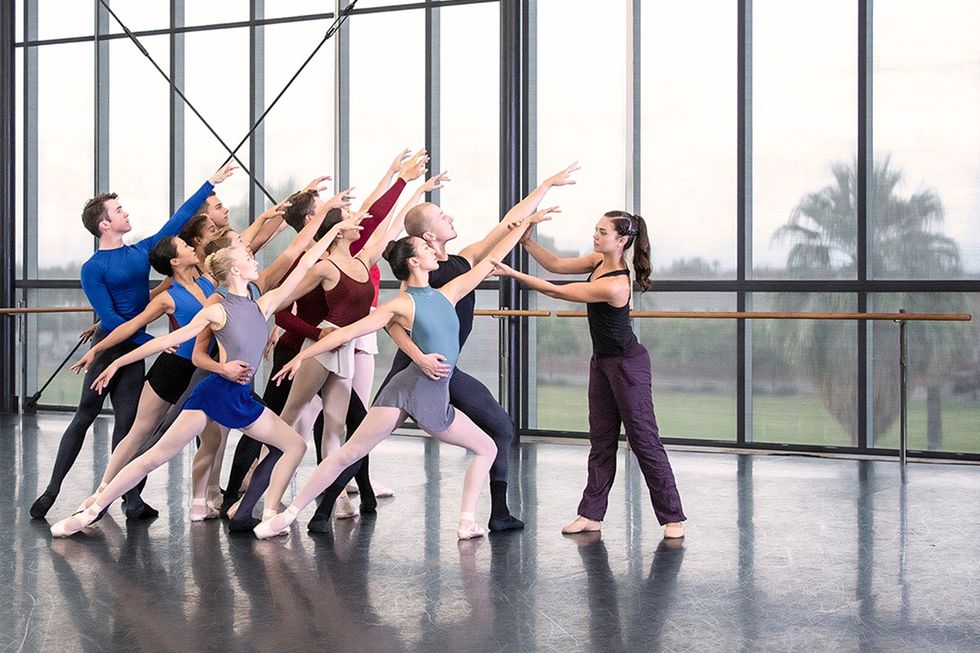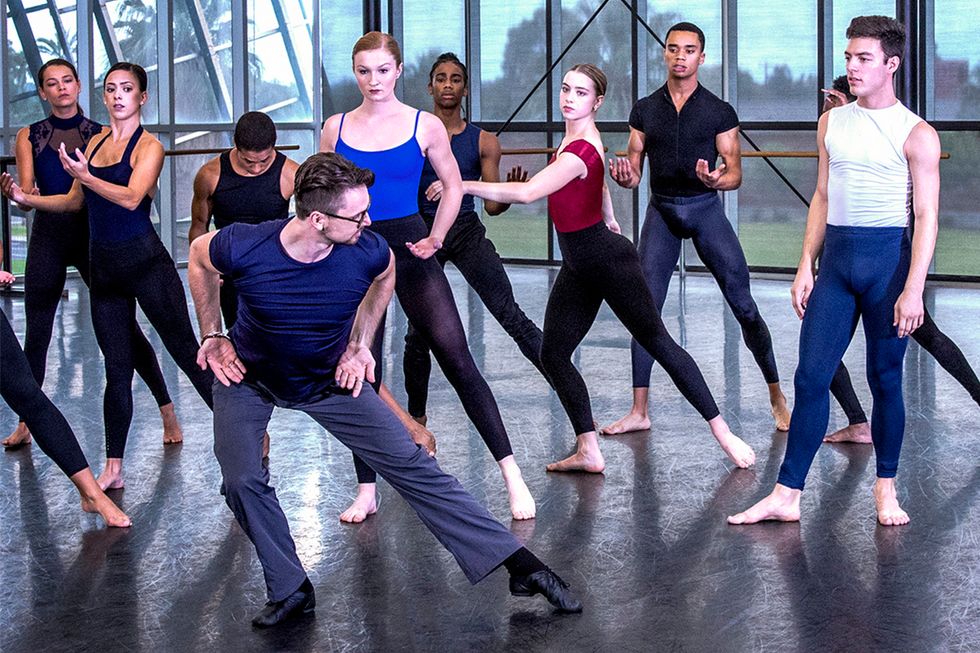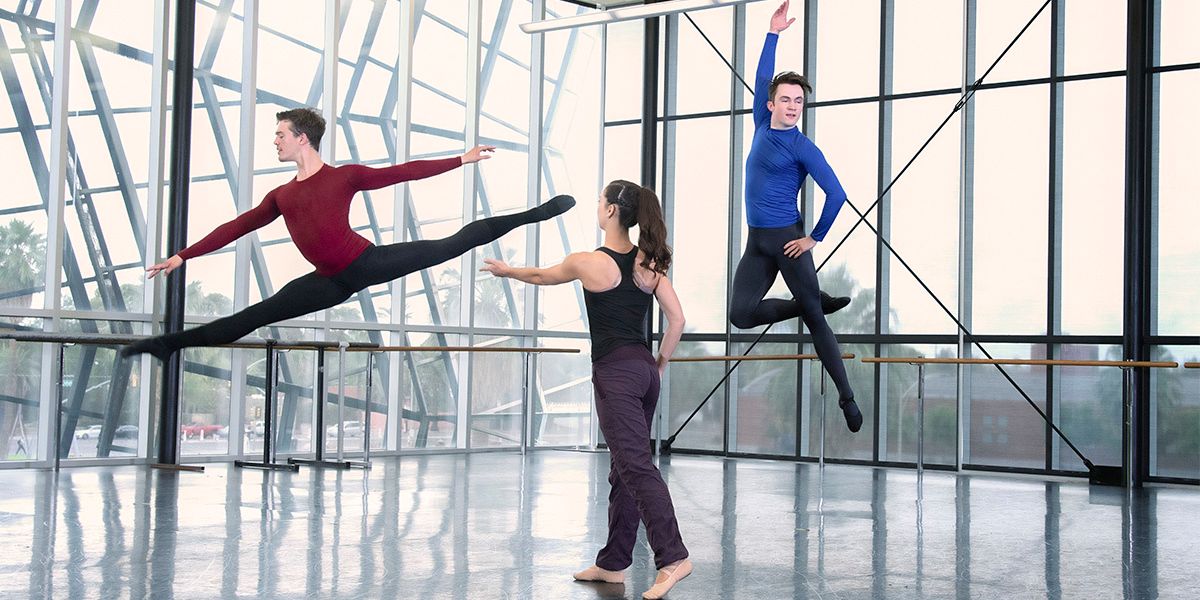University of Arizona Faculty On What It's Like to Go From Professional to Professor
In the final years of her decade-long career with the Lewitzky Dance Company, University of Arizona Associate Professor Amy Ernst began to develop an interest in dance injury prevention. She remembers feeling an urge to widen her understanding of dance and the body. Soon after retirement from the Company, she was hired by the Kerlan-Jobe Orthopaedic Clinic in Inglewood, California as a physical therapy assistant, where she worked for the next three and a half years. This work eventually led her to pursue an M.F.A. in dance at the University of Washington-Seattle. She remembers growing into the role of a professor during her time pursuing her degree. That incubation phase was critical. Ernst joined the faculty at the University of Arizona in 1995, and now as director of the M.F.A. program, mentors the new generation of dance faculty, company directors and innovators.
Transitioning from being a performer to a professor is a shift in focus. Ernst explains, “Instead of requiring hyper-focus on your own technique and level of performance on stage night after night, the rigor of being a faculty member is balancing the requirement for excellence in teaching, service, and creative activities.” This triple proficiency is a standard for university positions.

Photo by Ed Flores/MFA candidate Kara Madden rehearses undergraduate dance majors
At the University of Arizona in Tucson, all graduate students receive hands-on teaching experience in dance technique classes, as well as lecture courses. The program ensures M.F.A. dancers develop teaching skills in multiple disciplines, something that Assistant Professor Autumn Eckman highlights as critical for working in academic settings. Eckman, whose career spanned performing and choreographing for Hubbard Street, Giordano Dance Chicago and State Street Ballet, emphasizes the importance of being able to move between disciplines as a teacher and artist saying, “As a teacher, you call upon your experiences. M.F.A. candidates need a breadth of knowledge and experience to become leaders.”
That breadth of experience also extends to scholarly research. Ernst explains “service to the art form as a faculty member includes producing research that moves dance forward as a discipline in an academic setting. This is built into the curriculum for our M.F.A. dancers. They have an opportunity to explore their interests and how they inform their creative practice.” At UA, an internationally recognized research intensive university, this aspect runs deep. M.F.A. dancers are encouraged to take advantage of the proximity to experts in other fields and seek out collaborations with other disciplines on campus. M.F.A. dancers are just as likely to be on stage performing as they are presenting research.

Photo by Ed Flores/MFA candidate David Bagley teaches undergraduate dance majors
The balance of performance, choreography, and academics is what attracted now Assistant Professor Tamara Dyke-Compton and Instructor Christopher Compton to pursue M.F.A. degrees at the University of Arizona. After touring as principals in Twyla Tharp’s Movin’ Out, they were ready to put down roots, but the decision to leave the stage was a hard one. At UA, they were able to perform in the state-of-the-art Stevie Eller Dance Theatre in a robust season of faculty and guest work. Dyke-Compton says, “dancers unsure if they want to leave the stage or not can continue to perform and evolve as artists. An M.F.A. is a time to explore and re-inspire.” Compton adds, “the undergraduate talent and technical support available in this program provide choreographic opportunities that are unmatched.” For both, this time of exploration yielded them the roots they were looking for sooner rather than later, and both were appointed faculty positions. “Now it’s about having an impact in the long run,” says Dyke-Compton, “it’s about giving back to students.”
To prepare graduate students for careers in academia as well as other leadership roles in the field, the University of Arizona curriculum is a “three-dimensional view of dance,” Ernst says. “The M.F.A. curriculum requires dancers to produce scholarly research alongside choreography, and to teach dance academics alongside technique classes. The focus is on learning from real-world settings and the challenges that arise. And if you’re interested in becoming a faculty member, an M.F.A. is key. It is a terminal degree, and now for most universities, a minimum requirement.”
There is one aspect of being a professor that seems to rise above the rest. For all, it is about mentorship and developing the next generation of dance leaders. As Eckman puts it, “as a professor or graduate teaching assistant, it is about supporting the strengths of the students you have in front of you. You meet them where they are and help them find their unique voices and contributions to this art form.”




